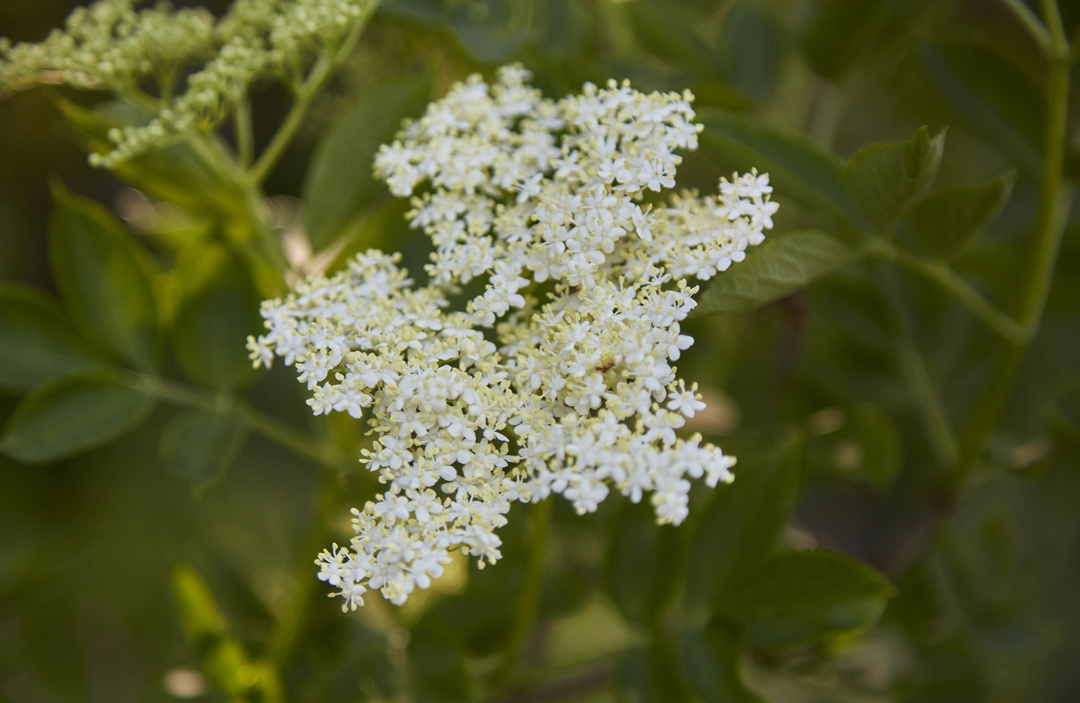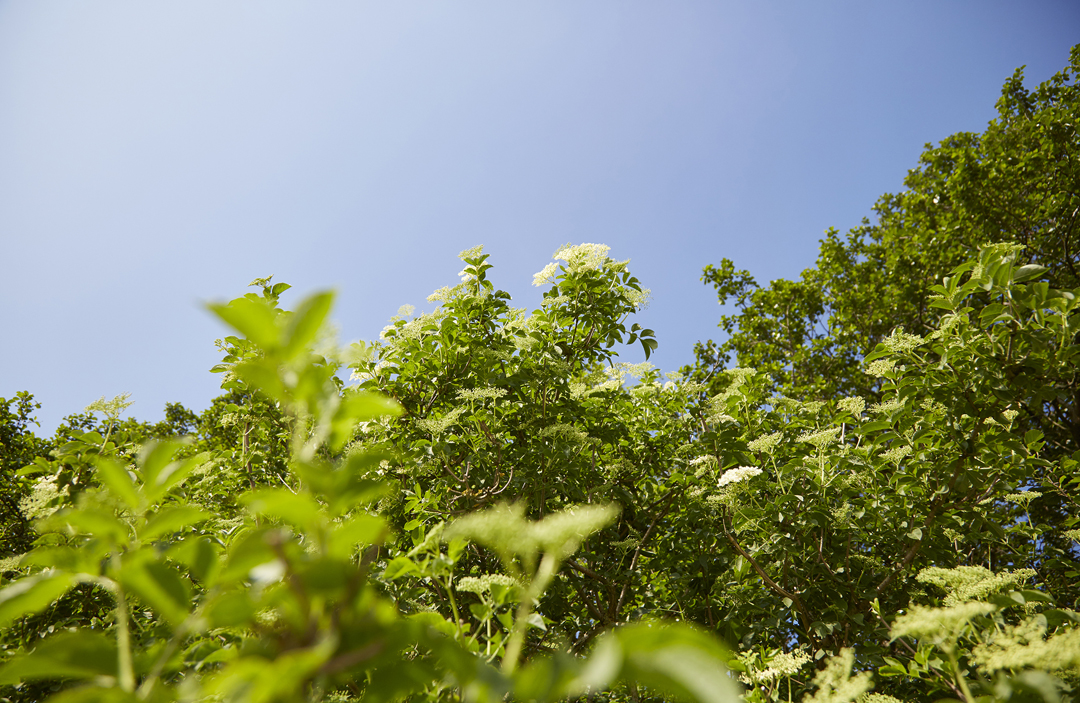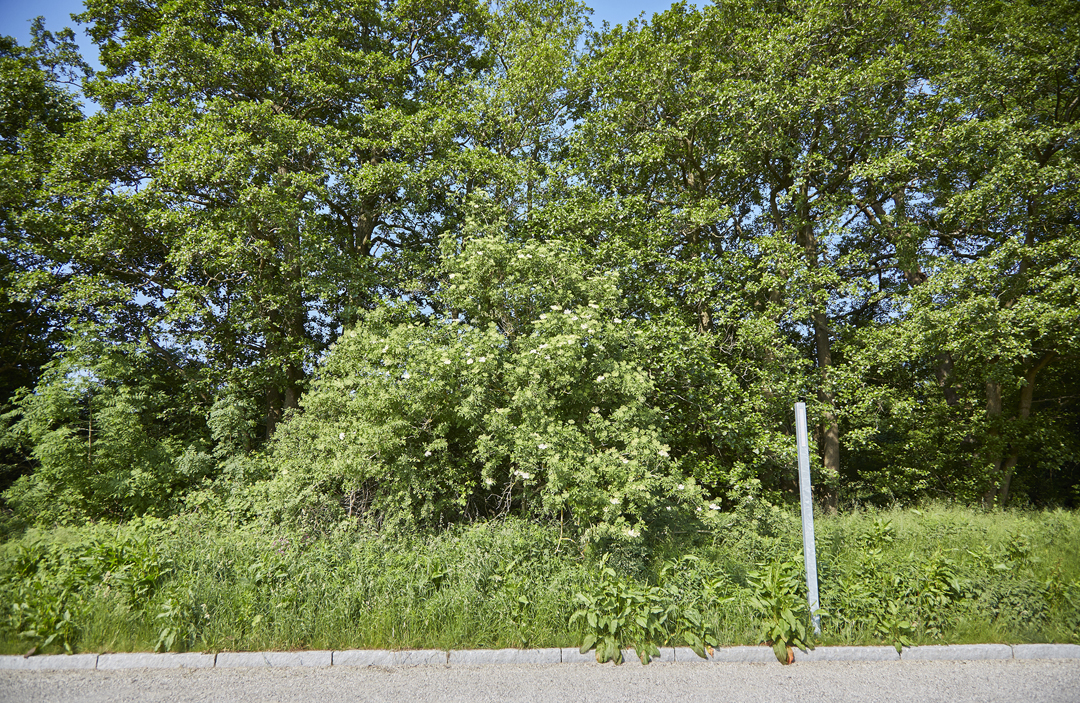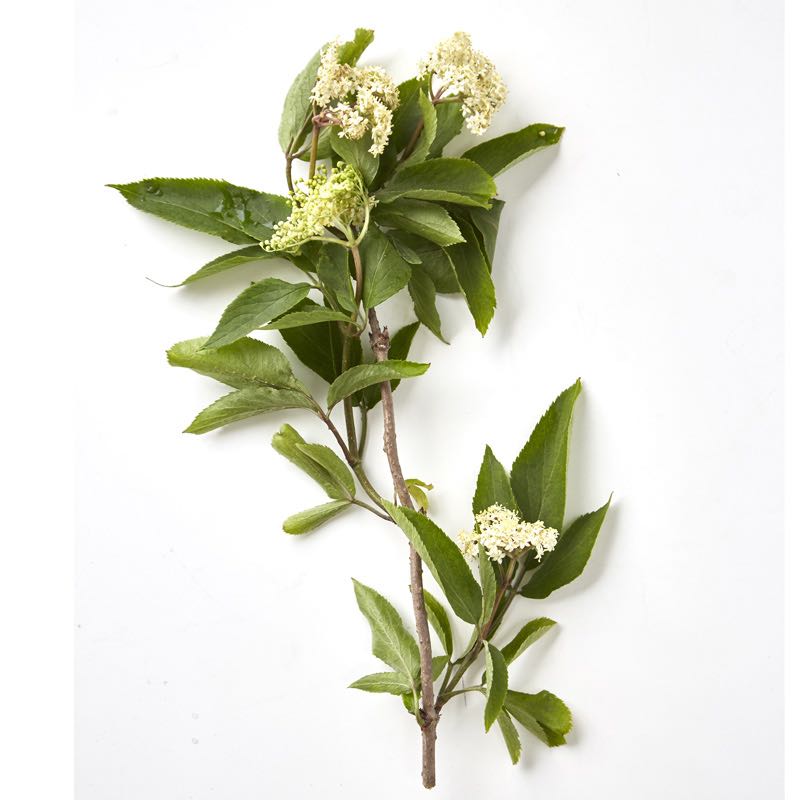



Elderberry
People once planted elder trees to protect their homes from packs of trolls and evil. According to Norse mythology, Freya, the goddess of love, lived in one. Different parts of the tree have long been used in herbal medicine—and in cooking.
-
Where to Find It
Elder grows in fertile soil at the edge of woods, in parks, and hedges—and quite often in the natural areas near around human habitats, where it often crosses over from being a cultivated garden plant to become a wild stray. It can tolerate wind, frost, salt, and shade.
Salt marshes, deciduous forests, coniferous forests, towns, hedges.
-
When to Find It
Pick the unripe berries in August, or wait for ripe ones in September or October.
Unripe berries: August. -
How to Spot It
Elder is a very common bush or tree that grows up to seven meters tall. In July it blooms with tiny, creamy white flowers clustered in round umbels that are 10-20 cm in diameter. Break off a branch and notice the white core that runs through the tree. The bark is greyish-brown and often covered with a greenish layer of algae. Each flower produces a single small elderberry that is a deep purple color and shiny.
-
How to Pick It
Clip off the umbels of green/unripe or dark red/ripe berries with a pair of scissors. Be careful when handling the ripe berries—they can turn to mush, and the highly pigmented juice can be nearly impossible to get out of your clothes.
Ripe berries: September, October.
Risk of misidentifying the plant
Edible elder can be confused with the toxic dwarf elder, which isn't a tree, but an herbaceous perennial. Dwarf elder also has pale red flowers that smell a bit like marzipan. Red elderberry is also toxic and can be recognized by its berries, which aren't as dark as the edible kind, and grow in egg-shaped umbels, rather than circular ones. The pith in the branches of the red elderberry isn't white like it is on the edible elder.

